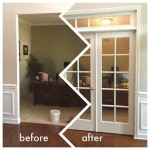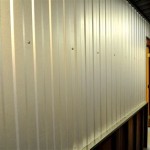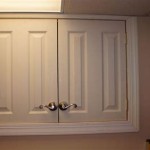How Long Does It Take To Paint The Interior Of A 2000 Sq Ft House?
Determining the timeframe for painting the interior of a 2000 sq ft house is a multifaceted calculation, influenced by several factors beyond simply the square footage. While a quick estimate might seem straightforward, a realistic projection requires a detailed assessment of the project's scope, the condition of the walls, the preparation required, the number of coats, and the efficiency of the painting team, among other considerations. A thorough understanding of these elements is crucial for homeowners and painting professionals alike to accurately plan and budget for the endeavor.
The size of the house, while fundamental, provides only a starting point. A 2000 sq ft house can encompass various floor plans, room layouts, and ceiling heights, each contributing to the overall painting surface area. For instance, a two-story house with similar dimensions to a single-story ranch might require more time due to the complexity of painting stairwells, hallways on multiple levels, and potentially higher ceilings in certain rooms. The presence of numerous windows, doors, and trim work also adds to the complexity and the required time.
Beyond the physical dimensions, the condition of the existing surfaces significantly impacts the duration of the project. Walls with extensive damage, such as cracks, holes, or water stains, necessitate thorough repairs before any paint can be applied. This preparation work can consume a considerable portion of the overall timeline. Similarly, previously painted surfaces might require sanding to ensure proper adhesion of the new paint, especially if the existing finish is glossy or peeling. The type of paint previously used and the desired color change also influence the required preparation.
Therefore, a comprehensive estimate needs to account for all these variables to provide a realistic expectation of the time required to complete the interior painting of a 2000 sq ft house. We will explore these factors in detail, providing a framework for accurate time estimation and project planning.
Key Point 1: Factors Influencing the Painting Timeline
Several key factors contribute to the overall duration of an interior painting project. These factors can be broadly categorized into preparation work, painting process, and drying time. Each category contains elements that can either accelerate or decelerate the completion of the task.
Preparation Work: This phase is often the most time-consuming, particularly if the walls are in poor condition. The tasks involved typically include:
- Surface Cleaning: Walls must be thoroughly cleaned to remove dust, dirt, grease, and cobwebs. Washing with a mild detergent solution and rinsing with clean water is often necessary.
- Repairing Damage: Cracks, holes, and dents need to be filled with spackle or patching compound. Larger holes may require more extensive repairs using drywall patches. Sanding smooth the repaired areas is crucial for a seamless finish.
- Sanding: Existing glossy paint should be sanded to create a better surface for the new paint to adhere to. This process is essential to prevent peeling and chipping.
- Priming: Applying a primer coat is essential if painting over dark colors or bare drywall. Primer seals the surface, improves paint adhesion, and ensures uniform color coverage.
- Taping and Covering: Protecting trim, windows, doors, and flooring with painter's tape and drop cloths is crucial to prevent paint splatters and ensure clean lines.
The time required for preparation depends heavily on the condition of the walls and the level of detail involved in protecting the surrounding surfaces. For example, a newly constructed house with smooth drywall will require significantly less preparation than an older house with damaged walls and intricate trim work.
Painting Process: The actual application of paint also has a significant impact on the timeline. Several factors come into play here:
- Number of Coats: Typically, two coats of paint are recommended for optimal coverage and durability. However, if painting a light color over a dark color or using a lower-quality paint, additional coats may be necessary.
- Method of Application: Using rollers and brushes typically takes longer than using a paint sprayer, especially for large, flat surfaces. However, sprayers require more preparation to protect surrounding areas from overspray.
- Paint Type: Different types of paint have different drying times and application properties. Latex paints are generally faster drying and easier to work with than oil-based paints. High-quality paints often provide better coverage and require fewer coats, reducing the overall time.
- Trim and Detail Work: Painting trim, baseboards, crown molding, and window frames requires more precision and time than painting large wall surfaces.
The painter's skill and experience also play a crucial role in the efficiency of the painting process. Experienced painters can apply paint smoothly and evenly, minimizing drips and runs, and completing the job more quickly.
Drying Time: Adequate drying time between coats is essential for a durable and aesthetically pleasing finish. The recommended drying time varies depending on the type of paint and the environmental conditions, such as humidity and temperature. Rushing the drying process can lead to paint peeling, cracking, or blistering.
Generally, latex paint dries to the touch in a few hours, but it is recommended to wait at least 24 hours before applying a second coat. Oil-based paints typically require longer drying times, often up to 48 hours.
Key Point 2: Estimating Time Based on Room Type and Complexity
A more refined estimate can be achieved by breaking down the 2000 sq ft house into individual rooms and accounting for the specific characteristics of each space. Different rooms present different challenges and require varying amounts of time for preparation and painting.
Bedrooms: Bedrooms are typically straightforward to paint, with relatively few obstacles. The average bedroom in a 2000 sq ft house might take 1-2 days to paint, including preparation and two coats of paint. This estimate assumes minimal damage to the walls and a standard ceiling height.
Bathrooms: Bathrooms require more attention due to the presence of fixtures such as sinks, toilets, and showers. The high humidity levels also necessitate using paints specifically designed for bathrooms, which may have different drying times. A typical bathroom might take 1-1.5 days to paint.
Kitchens: Kitchens often have the most complex layouts due to cabinets, appliances, and backsplashes. The walls may also be more prone to grease and stains, requiring extensive cleaning and preparation. Painting a kitchen can take 2-3 days, depending on the size and complexity.
Living Rooms and Dining Rooms: These rooms are often larger than bedrooms and may have higher ceilings or more intricate trim work. The presence of fireplaces, built-in shelves, and large windows can also add to the complexity. Painting a living room or dining room could take 2-4 days.
Hallways and Stairwells: Hallways and stairwells present unique challenges due to their narrow spaces and varying heights. Painting stairwells can be particularly time-consuming due to the need for ladders and careful maneuvering. These areas might take 1-2 days to paint.
These are just estimates, and the actual time required can vary significantly depending on the specific features and condition of each room. It's essential to assess each room individually and factor in any unique challenges before arriving at a final estimate.
For instance, rooms with textured walls, such as orange peel or knockdown texture, will require more paint and may necessitate additional coats to achieve uniform coverage. Rooms with wallpaper will require time for wallpaper removal, which can be a laborious process. In addition, the presence of lead paint in older homes requires specific safety precautions and disposal methods, adding to both the time and cost of the project.
Key Point 3: Professional vs. DIY Painting and Team Size
The decision to hire professional painters or undertake the project as a DIY endeavor significantly impacts the timeline. Professional painters bring experience, efficiency, and specialized equipment to the table, allowing them to complete the job more quickly and with a higher quality finish.
Professional Painters: A team of two experienced painters can typically paint the interior of a 2000 sq ft house in 3-5 days, including preparation and two coats of paint. This estimate assumes that the walls are in reasonably good condition and that the team works efficiently. Larger teams can further reduce the timeline, but the cost will also increase.
Professional painters have the knowledge and skills to properly prepare surfaces, apply paint evenly, and minimize errors. They also have access to professional-grade equipment, such as paint sprayers and scaffolding, which can speed up the process and improve the quality of the finish. Furthermore, they often provide warranties on their work, offering peace of mind to homeowners.
DIY Painting: Painting the interior of a 2000 sq ft house as a DIY project can take significantly longer, especially for inexperienced painters. A single person working alone might take 1-2 weeks to complete the job, depending on their skill level and the amount of time they can dedicate to the project each day. This estimate also assumes that the person has the necessary tools and equipment.
While DIY painting can save money on labor costs, it also requires a significant time investment and the potential for errors. Inexperienced painters may make mistakes that can result in a less-than-professional finish, such as drips, runs, uneven coverage, and paint splatters. They may also lack the proper safety equipment and knowledge to handle potentially hazardous situations, such as working at heights or dealing with lead paint.
Team Size: Whether hiring professionals or undertaking a DIY project, the size of the painting team has a direct impact on the timeline. A larger team can complete the job more quickly, but it also requires more coordination and management. In the case of professional painters, a larger team will also increase the labor cost.
For DIY projects, enlisting the help of friends or family can significantly reduce the timeline. However, it's important to ensure that everyone involved has the necessary skills and is willing to commit the time and effort required to complete the project successfully.
Ultimately, the decision to hire professional painters or undertake a DIY project depends on individual circumstances, including budget, time availability, skill level, and desired quality of finish. Weighing the pros and cons of each option is crucial before making a decision.

How Long Will It Take To Paint A 2 000 Sq Ft House Interior

How Much Does Interior House Painting Cost A New Leaf

How Long It Takes To Paint A House Interior An In Depth Guide Fresh Coat Painters

How Long It Takes To Paint A House Interior An In Depth Guide Fresh Coat Painters

How Long It Takes To Paint A House Interior An In Depth Guide Fresh Coat Painters
The Cost To Paint Interior Of A House Touch Color

Cost To Paint A House Whole Painting Fixr

Interior Painting Cost Per Square Foot Home Painters Toronto

How Much Does It Cost To Paint A 2000 Sq Ft House

How Much Does Interior House Painting Cost A New Leaf
Related Posts








